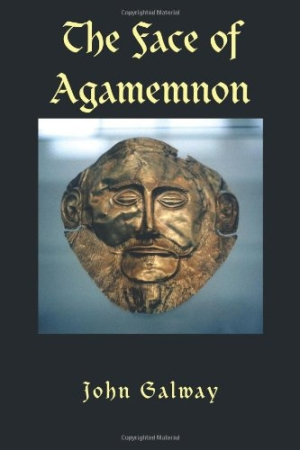The Face of Agamemnon
John Galway’s tale about elderly former KGB and SS officers battling over a hoard of stolen art treasures and Nazi gold nearly half a century after the end of World War II is a well-paced and intriguing page-turner.
Galway, a journalist, chose to write his otherwise excellent novel from the point of view of a reporter interviewing old veterans. He has crafted an engaging and, for the most part, believable story, yet it is told in remembrances and flashbacks. The plot seems better suited to a more linear and traditional adventure thriller, where the action is happening in the present rather than described as having occurred in the past.
The cast of elderly exiles Galway created is brilliant. They include spies, Estonian SS soldiers, Cold War freedom fighters, and volunteer ski troops who fought in the Winter War. There are killers and heroes aplenty, from those who rounded up and murdered local Jews to those who helped them escape—some by helping them hide out for years as members of the Estonian corps of the Nazi Waffen SS, the fanatic combat arm of a demoniacal organization that exterminated its own people.
At the heart of the story is the fate of gold artifacts spirited out of Berlin in the waning days of the war. Among these are items archaeologist Heinrich Schliemann found in his digs at Troy and Mycenae in the 1870s, including what he claimed to be the burial mask of the legendary King Agamemnon, a key character in Homer’s Iliad. More than four decades after those treasures were stolen, the surviving members of the Estonian and Soviet groups involved in the heist are still hunting each other and trying to recover what each thinks is their fair share of the treasure.
Galway’s vibrant characters include: Irma, a baroness who once adorned her naked body with parts of the treasure to dance for Herman Goring and other Nazis and who claims the gold artifacts allow her to channel the spirit of Helen of Troy; and the evil, slimy, murderous Andrei Zdanov, a retired general of Stalin’s dreaded NKVD, who persecuted Estonians during the Soviet invasion of the Baltic States in 1940 and again when the Russians reoccupied those lands after kicking out the Nazis. Neither Zdanov’s desire for vengeance nor his greed has cooled in the ensuing four decades, and he is matched in his ardor by that of his Estonian opponents who live in exile in the West.
This novel has intrigue and betrayal, passion and pride, gore and glory, and even a little romance. Galway puts himself into the story as the journalist who stumbles across the exiles; he is drawn ever deeper into their labyrinth of plots and counterplots that to his surprise continue into the late 1980s and early 1990s.
Except for two sections late in the book in which Galway takes an experimental drug and hallucinates being in Troy and Mycenae, the story rings so true that it makes the reader believe it is fact, not fiction.
Reviewed by
Mark McLaughlin
Disclosure: This article is not an endorsement, but a review. The publisher of this book provided free copies of the book and paid a small fee to have their book reviewed by a professional reviewer. Foreword Reviews and Clarion Reviews make no guarantee that the publisher will receive a positive review. Foreword Magazine, Inc. is disclosing this in accordance with the Federal Trade Commission’s 16 CFR, Part 255.

